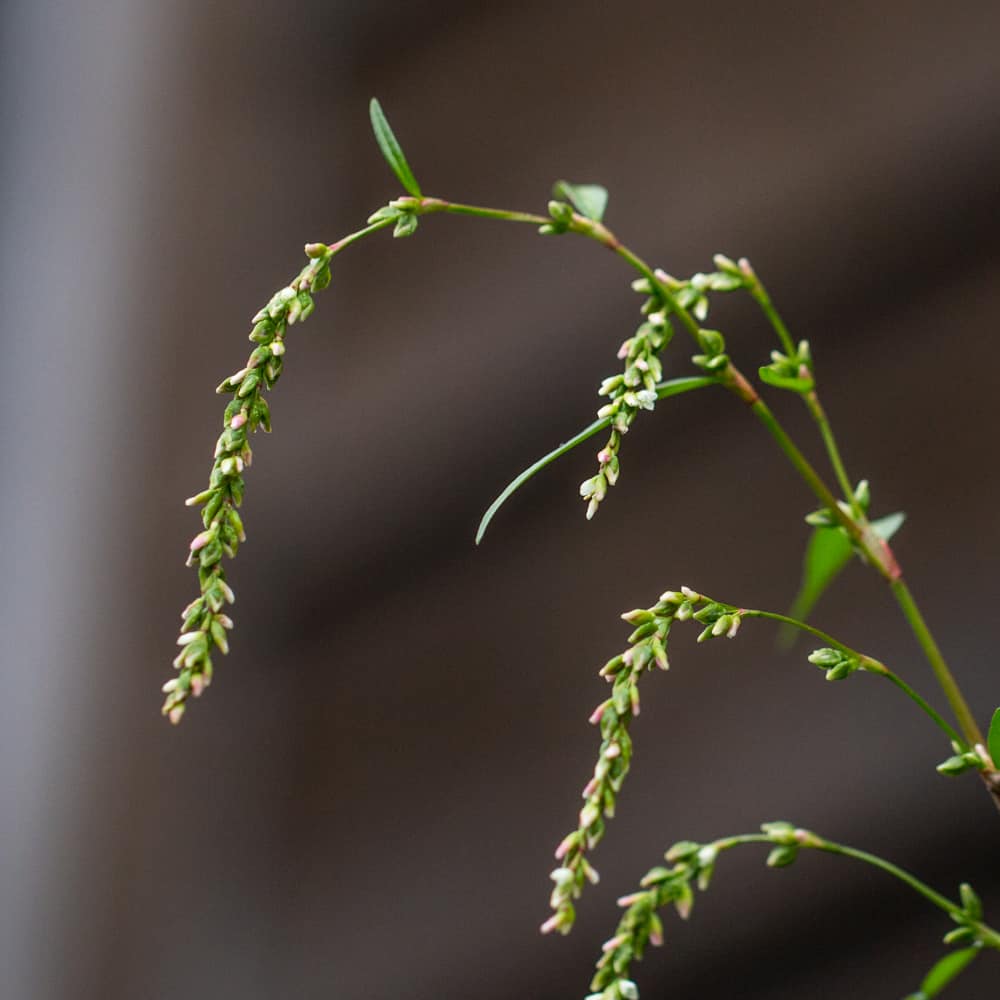DIf you're a forager who likes like spicy food, prepare to fall in love with marsh waterpepper (Persicaria hydropiper, formerly polygonum hydropiper). Today I'll share what I know about foraging and cooking with this very interesting herb.

Identification
Persicaria hydropiper is a common weed, and a European plant now widespread across North America and South America. It's part of a group of plants called smart weeds.
Once summer really kicks in around mid to late August in Minnesota and Wisconsin where I hunt, the smartweeds will appear. These are small, easy to identify plants once you know the leaves. There's a lot of them, and it can be hard to pick out the ones with red flowers and separate them into individual species, luckily the one you want has two very clear differences.
Habitat
These like to grow in damp areas near shallow water with rich soil from my experience. In town when I'm foraging, I might see them along the sides of a creek or pond, as well as in local gardens and disturbed areas. In rural areas I see these in damp pastures, and around gardens.
The Persicarias
Water pepper is a Persicaria, a group of plants in the buckwheat family (Polygonaceae) making it related to Japanese knotweed, as well as Vietnamese coriander (Persicaria odorata) and lady's thumb (Persicaria maculosa).
P. odorata is also known as Rau Ram-a delicious, aromatic herb used in Vietnamese cooking. Both rau ram and water pepper have a flavor slightly reminiscent of cilantro, so if you don't like cilantro, you might not like either of them.

The long stem and sheathed nodes are one of the hallmarks of water pepper and some of it's relatives. As many of the smartweeds look a like, it can be difficult to separate them at first, but once the flowers show themselves identification is very easy.
Waterpepper Identification
- Flowers and leaves all have an intense, spicy flavor similar to wasabi.
- Shows itself in mid-summer in the Midwest, typically in July-August where I live
- Has green flowers, which appear as tender, drooping spikes.
- Flavorless smart weeds will have red flowers that are upright, and shorter, as in the picture below.
- Common in woods, disturbed areas, and forested wetlands.




Waterpepper Look a likes
There's lots of smart weeds around about the same time, but none of them that I've tried have the same pungent taste. To check if you have true water pepper, taste a leaf.
Or, if you're unsure of your ID, wait until the flowers show themselves. Common smart weeds will always have small, clustering white or pink flowers. Below is an image of the most common waterpepper imposter: Polygonum pensylvanicum.

Cooking with Waterpepper
Eat a leaf or a seed raw and you'll get a kick just like you bit into a chili pepper. The hot taste is similar, but comes from a different compound than capsaicin (what makes peppers hot).
The hot flavor of water pepper comes from the bicyclic sesquiterpenoid known as polygodial. It's a little more clean and seems to have a shorter life-span in your mouth than heat from a hot pepper. You might compare the flavor to horseradish or wasabi.

How to use waterpepper
As I alluded to above, the flavor diminishes exponentially the more ingredients it's combined with.
For example, make a rice pilaf with a bunch of vegetables in it, finish it with a little handful of waterpepper. You'll get a gentle tingle here and there. Eat a leaf raw and you'll get a strong burn like a fresh jalapeno.

Traditional Uses
Even though this grows all around Europe, it seems like Asian cuisine, (Japanese specifically), seems to be the only type that has a tradition of using the plant as a spice.
The plant is used raw on sushi, and a type of sauce is made from it by pureeing or pounding in a mortar and pestle with mirin, rice vinegar, and pounded rice, called tade-su or tade-zu. The sauce is good with raw and cooked fish.

Medicinal and Anti-fungal Potential
One thing I've found interesting while looking up info on it's history and uses is that way back in 1987 it was shown to have potential as a fungicide, and could be potentially used to increase the potency of antibiotics. See the link below under references to view the abstract.

Keith
We add smartweed stems to the liquid from pepperoncini peppers and let steep in the refrigerator for about a week. Nice sauce, not too hot- clean flavor that won't dominate unlike say Tabasco.